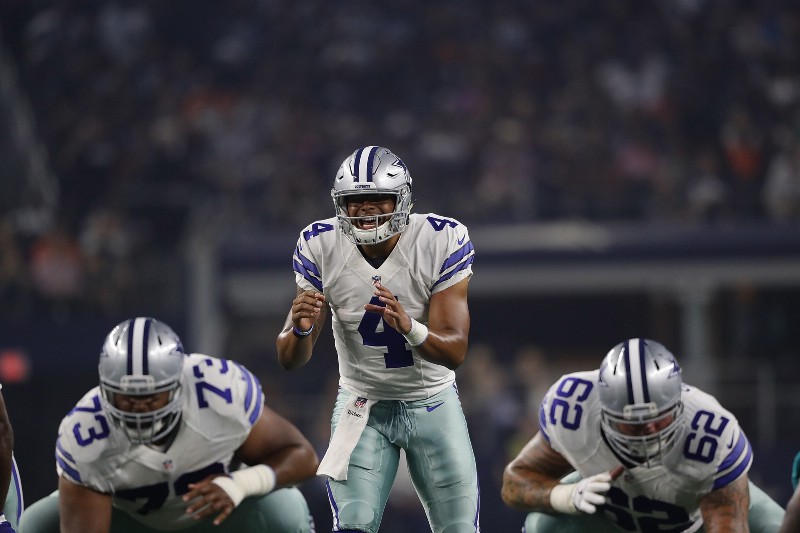We hear it all the time – “The NFL is a quarterback league.”
And that’s a fair statement.
After all rules have been annually changed over the years to help the offense, increase scoring (which the all-knowing commissioner believes is what fans want) and make it easier for quarterbacks to succeed.
It’s a fantasy football-driven mentality.
Consequently, all teams yearn for a franchise quarterback, a player that an organization can get behind, become the face of the team and ride for a 10-year run. We only need to consider the king’s ransoms the Rams, Eagles and Vikings forked over to acquire Messrs. Goff, Wentz and Bradford, respectively.
It’s also the motivating factor behind the $100+ million the Ravens invested in Joe Flacco.
Consider this – during the NFL’s coming of age years and even well beyond, the quarterback viewed by many as the greatest of all time was Johnny Unitas. Yet during his 18-year career, spanning 211 regular season games, Unitas threw 290 TDs and 253 interceptions to go with a completion percentage of 54.6% and a passer rating of 78.2.
But John was a big-game QB you say?
In only 9 career playoff games, Unitas tossed 7 TDs, 10 interceptions, had a 53.1% completion rate and a passer rating of 68.9.
With those stats today, Unitas would more likely be cut instead of making it to the Hall of Fame and considered amongst the greatest of all time. The point however, is to illustrate how much simpler it is to have success as an NFL quarterback in the modern era.
But back to Flacco…
For years the Ravens struggled with the quarterback position. It lacked stability and from year-to-year it was anyone’s guess who would be the signal caller to start the next season. That changed with the arrival of the gunslinger from Delaware.
During his rookie contract through the 2012 season, Flacco’s regular season record as a starter was a very impressive 54-26 (.675) and his playoff record even more sterling at 9-4 (.692). The Ravens of course, won Super Bowl 47 on the heels of Flacco’s magnificent romp through the playoffs culminating in a Super Bowl MVP. Owner Steve Bisciotti, enamored with the idea of consistent competency at the game’s most important position, paid handsomely to keep Joe around.
But since Bisciotti stroked that big check, Flacco is 24-24 (.500) as a regular season starter and 1-1 (.500) in the playoffs.
The struggles since Super Bowl 47 aren’t all Joe’s fault, but then again, the success prior to that wasn’t all his doing either. Up to and including 2012, there was more talent on the Ravens roster because then, the competency at quarterback came at a bargain basement price. When that price skyrocketed, the Ravens could no longer afford the supporting cast because there were fewer cap dollars to spread around.
Flacco clearly earned his contract but with his signature, before the ink even dried, he had signed up to carry a bigger load, if for no other reason than his W-2 placed a bigger burden on the team’s cap.
That’s just the nature of the beast in today’s NFL.
So with the Flacco signing, the table immediately flipped for the Ravens. Instead of Flacco being the inexpensive QB solution supported by more expensive surrounding parts, Flacco was THE most expensive player. The Ravens were then challenged to surround him with productive, albeit less expensive parts.
So far, they’ve failed.
While marinating in this reality it occurred to me, might it be better to manage a franchise in a way that allows it to enjoy competent young quarterback play while complemented by more competent surrounding veteran talent?
Since it is a quarterback friendly league it stands to reason that a rookie quarterback has an even greater chance of success today than ever before.

Look at the Eagles and the Cowboys. Both have rookie signal callers enjoying success. In the case of the Cowboys they have 2016’s 135th overall pick guiding them to a (5-1) record due in large part to the talent surrounding him. The Cowboys have what is generally regarded as the league’s best offensive line.
Think about what that does…
• Takes pressure off the quarterback providing adequate time to set
• Provides time to work through progressions at a comfortable pace
• Enables receivers ample time to create separation
• Boosts the running game to lessen the burden on a young QB
• Allows teams to manage field position, control the clock and minimize turnovers
• Keeps the defense fresh
• Can force opposing offenses to become one-dimensional
When the Ravens let Kelechi Osemele go after the 2015 season, it was believed to be a foregone conclusion given the team’s cap position and the conventional thinking that suggests you can’t have two of the league’s highest paid guards on the same team – Marshal Yanda of course being the other.
But why?
Why is that thinking so conventional?
Well, it’s because more cap dollars are needed to pay for higher paying positions (by demand) like tackle, edge rusher, wide receiver, cornerback and of course quarterback.
But what if you could get good enough quarterback play instead of elite play, while maintaining roster strength? Wouldn’t that be more prudent?
I get that if you have a Tom Brady or Peyton Manning or Aaron Rodgers you might think otherwise. But how many of those are around? What’s the likelihood of landing the next Tom Brady? Even Aaron Rodgers isn’t Aaron Rodgers for the moment and that puts a stranglehold on the Packers chance for success.
Having a stronger, more balanced roster also allows a team to compete if said franchise quarterback goes down with an injury. It makes the position more replaceable. By investing in the offensive line as a whole more so than the quarterback, there are more cap dollars to go around to find talented edge rushers and corners. Such a line lessens the burden of finding top flight receivers because the ample time and space provided by the line makes it easier for even average receivers to create separation. It makes it easier to plug in average running backs to boost the ground game.
If the Cowboys can find success with the draft’s 135th pick at quarterback, maybe they’ll look to add another mid 4th-rounder in 2018 to bring that quarterback along so when Prescott is ready to cash in, they aren’t held hostage. Maintaining the strength of that offensive front allows them to move on from Prescott and hand the reins over to the next QB that they’ve developed for a couple of seasons.
The NFL is a quarterback driven league.
But there’s growing evidence that you don’t have to have a quarterback driven payroll.
The Ravens once reaped such benefits.
Perhaps it’s time to reconsider them.










